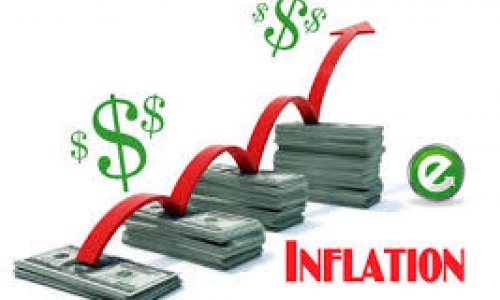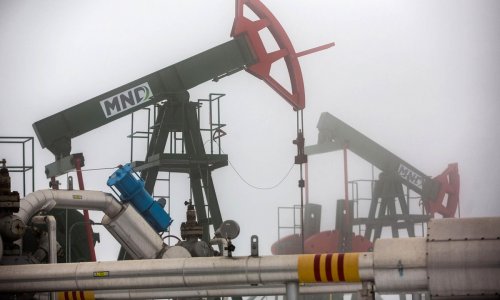Asian shares slid to their lowest levels since late 2011 on Monday after weak U.S. economic data and massive falls in oil prices stoked further worries about a global economic downturn.
Oil prices fell as much as 4 percent on Monday, with international benchmark Brent futures LCOc1 falling below $28 per barrel LCOc1, touching their lowest level since 2003.
MSCI's broadest index of Asia-Pacific shares outside Japan .MIAPJ0000PUS fell 1.0 percent in early trade, extending its fall so far this month to over 11 percent.
Japan's Nikkei .N225 tumbled as much as 2.8 percent to a one-year low. It has lost 20 percent from its peak hit in June, meeting a common definition of a bear market.
In China, the Shanghai Composite index .SSEC fell nearly 2 percent, piercing through intraday lows last seen in August when China's markets nosedived.
On Wall Street, S&P 500 .SPX hit a 15-month low on Friday, ahead of a market holiday on Monday for Martin Luther King Jr. Day.
"The fact that U.S. and European shares fell below their August lows, failing to sustain their rebound, is significant," said Chotaro Morita, chief fixed income strategist at SMBC Nikko Securities.
"We are coming to a stage where we need to consider the risk of recession in the global economy," he said.
An unexpected drop in retail sales and the third consecutive monthly fall in industrial output in December added to the latest indication that U.S. economic growth braked sharply in the fourth quarter.
Following those data, the Atlanta Federal Reserve's closely-watched GDPNow forecast model showed the U.S. economy is on track to grow 0.6 percent in the fourth quarter, slowing sharply from 2.0 percent growth in the third quarter.
U.S. companies' fourth-quarter profits are expected to decline more than 4 percent, which would be the second straight quarterly decline.
Federal Reserve officials have been stuck to a well-worn script: day-to-day financial market swings do not drive monetary policy.
But investors also further cut back their expectations on the U.S. Federal Reserve's rate hikes, with short-term interest rate futures <0#FF:> pricing in only one rate hike by the end of year, compared to two hikes priced in at the start of year.
Outside the United States, the economic outlook appeared even bleaker, with the energy and raw material sector hit the hardest as China's massive investment-led economy slows down.
Saudi Arabian shares .TASI fell 5.4 percent on Sunday, hitting a five-year low, as Riyadh could be pressured into more spending cuts to reduce the red ink, slowing economic growth further and conceivably threatening a recession if oil prices stay at current levels.
Brazilian shares .BVSP hit their low last seen in March 2009 as there is little sign Latin America's largest economy can get out of recession soon.
"The biggest focus is oil prices. Oil producing countries have to sell their assets to finance their budget gaps. They are selling shares around the world," said Norihiro Fujito, senior investment strategist at Mitsubishi UFJ Morgan Stanley Securities.
At the weekend, international sanctions against Iran have been lifted, allowing Tehran to return to an already glutted oil market, putting more pressure on the market even though prices have been falling in anticipation of the move.
That came after a 6 percent fall on Friday, bringing their drop since the start of year to more than 23 percent.
Oil prices have been declining sharply since mid-2014 on increased U.S. shale oil production, soft demand growth due to an economic slowdown in China and an end of cheap dollar funding that had fuelled energy investments as the Fed scaled back stimulus and tightened its monetary policy.
In the currency market, commodity-linked currencies took the brunt, with the Canadian dollar CAD= hitting a low last seen in early 2003 before giving up losses.
The yen gave up some of its gains after having risen to five-month high of 116.51 to the dollar JPY= on Friday. It stood at 117.30, down 0.2 percent on the day. The euro also edged down against the dollar to $1.0900 EUR=.
The Chinese yuan rose 0.5 percent CNH= in the offshore trade to 6.5840 to the dollar, however, as Chinese authorities continued to stamp down speculative yuan selling.
China will start implementing a reserve requirement ratio (RRR) to some banks involved in the offshore yuan market, the People's Bank of China (PBOC) said in a statement on Monday.
The statement confirmed a Reuters source-based story on Sunday. The sources told Reuters the PBOC is preparing to raise the reserve requirement ratio for yuan deposits placed in yuan clearing banks.
(Reuters)
www.ann.az
Follow us !











